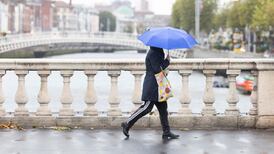A strong earthquake rocked a large swathe of northern Italy early today, killing at least six people, injuring dozens and seriously damaging historic buildings such as churches, bell towers and a mediaeval castle.
The quake, which the US Geological Survey recorded at magnitude 6.0, struck at 4am while most people were sleeping, and thousands ran into the streets in their night clothes in panic.
The epicentre of the quake, the strongest to hit Italy in three years, was in the plains near Modena in the Emilia-Romagna region of the Po river valley, and the tremor was felt as far west as Liguria, bordering France, and the Friuli region bordering Slovenia.
Four people died when the factory buildings they were working in collapsed in the provinces of Ferrara and Bologna, according to the Civil Protection Agency said, adding that 50 people were injured.
A 37-year-old German woman and a woman of more than 100 years old died after suffering heart attacks, the Ansa newswire reported. About 3,000 people have been evacuated, Ansa said.
"I ran out in my underwear," one man told Italian television. The roof of the cathedral in Mirandola collapsed.
"Our school children were to receive their first communion here this morning. If it had happened then it would have been a disaster," the local priest said.Also badly damaged was the 14th century Estense Castle in the town of San Felice Sul Panaro.
The tops of several of the smaller towers of the famous mediaeval castle, the town's biggest attraction, collapsed and there were fears that the main tower could crumble. Three of the town's churches were severely damaged.
In late January, A 5.4-magnitude quake shook northern Italy.
Some office buildings in Milan were evacuated as a precaution and there were scattered reports of falling masonry and cracks in buildings.
The tremor was one of the strongest to shake the region, seismologists said.
Initial television footage indicated that older buildings had suffered damage.
Roofs collapsed, church towers showed cracks and the bricks of some stone walls tumbled into the street during the quake. As dawn broke over the region, residents milled about the streets inspecting the damage.
Italy’s Sky TG24 showed images of the collapsed ceramics factory in Sant’Agostino di Ferrara where the two workers were reportedly killed. The structure, which appeared to be a hangar of sorts, had twisted metal supports jutting out at odd angles amid the mangled collapsed roof.
The quake “was a strong one, and it lasted quite a long time”, said Emilio Bianco, receptionist at Modena’s Canalgrande hotel, housed in an ornate 18th century palazzo.
The hotel suffered no damage and Modena itself was spared, but guests spilled into the streets as soon as the quake hit, he said.
Many people were still awake in the town since it was a “white night”, with shops and restaurants open all night. Museums were supposed to have remained open as well but closed following the bombing of a school in southern Italy that killed one person.
The quake epicentre was between the towns of Finale Emilia, San Felice sul Panaro and Sermide, but was felt as far away as Tuscany and northern Alto Adige.
The initial quake was followed about an hour later by a 5.1-magnitude aftershock, USGS said. And it was preceded by a 4.1-magnitude tremor.
In late January, a 5.4-magnitude quake shook northern Italy. Some office buildings in Milan were evacuated as a precaution and there were scattered reports of falling masonry and cracks in buildings.
In 2009, a devastating tremor killed more than 300 people in the central city of L’Aquila.
AP/Bloomberg









